Answer to the first question
In RealityKit and ARKit frameworks ARCamera node has a pivot point like other entities (nodes) have, and it's located at the point where lens is attached to the camera body (at bayonet level). This pivot can tether AnchorEntity(.camera). In other words, virtual camera and real-world camera have that pivot point approximately at the same place.
So, if you attach RealityKit's AnchorEntity to a camera's pivot, you place it to the coordinates where camera's bayonet is located. And this AnchorEntity(.camera) will be tracked automatically without a need to implement session(_:didUpdate:) method.
However, if attach ARKit's ARAnchor to the camera's pivot, you have to implement session(_:didUpdate:) method to constantly update a position and orientation of that anchor for every ARFrame.

Answer to the second question
If you want to constantly update model's position in RealityKits at 60 fps (when ARCamera moves and rotates) you need to use the following approach:
import ARKit
import RealityKit
class ViewController: UIViewController {
@IBOutlet var arView: ARView!
override func viewDidLoad() {
super.viewDidLoad()
let box = MeshResource.generateBox(size: 0.25)
let material = SimpleMaterial(color: .systemPink, isMetallic: true)
let boxEntity = ModelEntity(mesh: box, materials: [material])
let cameraAnchor = AnchorEntity(.camera) // ARCamera anchor
cameraAnchor.addChild(boxEntity)
arView.scene.addAnchor(cameraAnchor)
boxEntity.transform.translation = [0, 0,-0.5] // Box offset 0.5 m
}
}
Or you can use ARKit's great old .currentFrame instance property in session(_:didUpdate:) delegate method:
extension ViewController: ARSessionDelegate {
func session(_ session: ARSession, didUpdate anchors: [ARAnchor]) {
guard let transform = arView.session.currentFrame?.camera.transform
else { return }
let arkitAnchor = ARAnchor(transform: transform)
arView.session.add(anchor: arkitAnchor) // add to session
let anchor = AnchorEntity(anchor: arkitAnchor)
anchor.addChild(boxEntity)
arView.scene.addAnchor(anchor) // add to scene
}
}
class ViewController: UIViewController {
@IBOutlet var arView: ARView!
var boxEntity = ModelEntity(...)
override func viewDidLoad() {
super.viewDidLoad()
arView.session.delegate = self // Session's delegate
}
}
To find out how to save the ARCamera Pose over time, read the following post.
